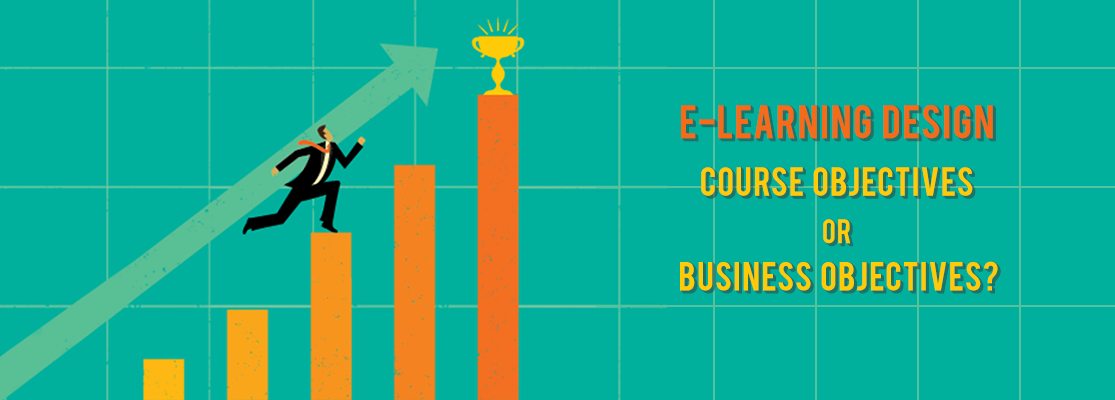E-LEARNING DESIGN: COURSE OBJECTIVES OR BUSINESS OBJECTIVES?
It’s all too familiar a scene, right from the word GO.
Project confirmed, base content ‘analyzed’, design document drawn from the ‘analysis’ (with a list of tame course objectives outlined), course developed, signed off after a few reviews and deployed on the LMS. Course effectiveness: Unknown.
This rather dramatic prelude goes to highlight the conspicuous absence of performance consulting. If it were to be present, it would first ask “What are the business problems?” and try to get the answers, before proceeding.
Sometimes, the answer could be ‘E-Learning is NOT the solution for the desired business objectives’… in which case, we would NOT design an e-learning course but suggest something more appropriate. Sometimes it could be instructor led training. At other times, it could be a simple bunch of PDF documents to support learners in their moment of need. Even other times, it could be something altogether different from training – like changing the environment in which people perform their jobs, or updating the interface of the application (on which the course was to be developed) to make it more user friendly.
Whatever the solution, the key here is for us to transition from ‘order takers’ to ‘performance consultants’ – to quote Cathy Moore. Once transitioned, we see ourselves playing a different role altogether… not that we cease to be learning designers, but that role is a follow-on of our being performance consultants first. The initial step in accomplishing this role effectively is to make sure that e-learning design is indeed the solution for the problems faced by the business.
That said, we – as performance consultants – should find ourselves going straight to Point Z (which is the ‘desired outcome of the course’), do the necessary performance analysis and trace our steps back to Point A (which is about ‘analyzing the content’).
The same reasoning applies to clients as well. By asking this question about the business problem, we help them also transition from merely putting up a few courses on the LMS just because they have to, to considering performance outcomes. We help them ask themselves, “What is it that we want our employees to be able to DO after taking up the e-learning course?” because, this question is what is going to impact their business objectives.
Once we succeed in transitioning clients to this state of mind, we start talking to them in a different language. We get them to seek our thoughts on how the course can help their employees PERFORM better rather than insisting on all of the content having to necessarily feature in the course. It would be something like, “We want our people to be able to install the machine in five minutes”, as against “We would like to build a 45-minute course on machine installation.”
Having said that, here are a few tips we can keep in mind to become a performance consultant:
1. Ask questions (plenty of them) before you dive into the project. Some questions you could ask are:
- What problems are you facing that led you to believe that a course is the solution?
- What is currently happening with respect to this problem? How good or bad is the situation, and what is the impact on business?
- What do you think will be a good measure of success once we roll out the course to the audience? What will people be able to do differently after they go through the course?
- Have you tried anything on these lines before? And if yes, what did you try? And what were the results?
- What are the consequences to the learner if they don’t do this well? In other words, why should they care?
2. Consider that there could be a wide range of solutions (such as e-learning, mobile learning, instructor led training, social learning, gamified solutions, social learning, performance support, spaced retrieval, or a blend of two or more of these elements). Pick and choose deliberately from this range, and do not default to an e-learning course as the only solution.
Finally, cultivate a deep sense of commitment for what the business needs instead of simply settling for what the client wants. Proceed from there. Business objectives will start looking extremely relevant… and, achievable.
Written by Nirmal Ranganathan
(Senior Learning Designer at Learnnovators)
_________________________________
Published on 05-Nov-2016








